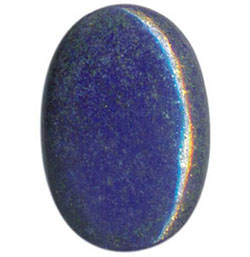 | LAPIS | Hardness | 3 | | Color | Deep blue with pyrite | | Origin | - | | Transparency | Opaque | | |
|
| Lapis lazuli (pronounced /ˈlæpɪs ˈlæzjəliː/) (sometimes abbreviated to lapis) is a semi-precious stone prized since antiquity for its intense blue color.
Lapis lazuli has been mined in the Badakhshan province of Afghanistan for 6,500 years, and trade in the stone is ancient enough for lapis jewelry to have been found at Predynastic Egyptian sites, and lapis beads at neolithic burials in Mehrgarh, the Caucasus, and even as far from Afghanistan as Mauritania.
The finest color is intense blue, lightly dusted with small flecks of golden pyrite. There should be no white calcite veins and the pyrite inclusions should be small. Stones that contain much calcite at all or too much pyrite are not as valuable. Patches of pyrite are an important help in identifying the stone as genuine and do not detract from its value. Often, inferior lapis is dyed to improve its color, but this is often a very dark blue with a noticeable grey cast, may also appear as a milky shade.
Lapis takes an excellent polish and can be made into jewelry, carvings, boxes, mosaics, ornaments and vases. In architecture it has been used for cladding the walls and columns of palaces and churches.
It was also ground and processed to make the pigment ultramarine for tempera paint and, more rarely, oil paint. Its usage as a pigment in oil paint ended in the early 19th century as a chemically identical synthetic variety, often called French Ultramarine, became available.
|
|
|
|